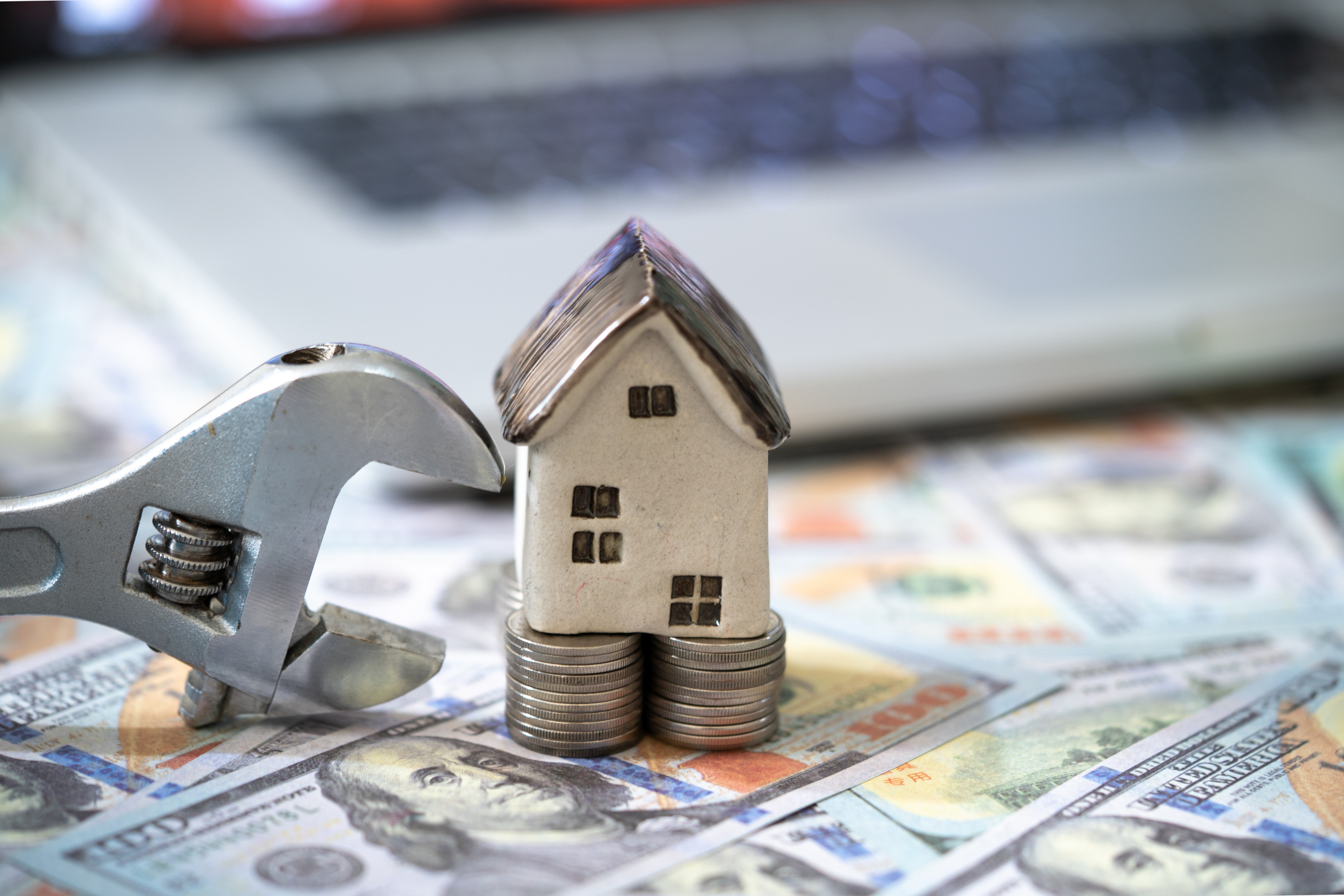18 Ways to Cut Your Energy Bill
Make your home and lifestyle more energy-efficient — and save money while you’re at it — with these moves

Utility bills have surged for many homeowners, with electricity costs up 5.5% year-over-year. CBS News reports that natural gas customers are also facing higher bills, averaging a 13.8% increase.
Why are bills rising so much? When demand grows, prices tend to follow. A polar vortex in some regions, combined with increased energy demands from data centers and more oil and gas drilling, has driven this demand. Neither the demand nor the price hikes is likely to diminish soon.
The U.S. Energy Information Administration forecasts electricity rates could rise by as much as 18% in the coming years. With winter approaching, now is the time to protect your home from rising costs. Here are 18 ways to reduce energy use at home and cut your utility bills.
From just $107.88 $24.99 for Kiplinger Personal Finance
Become a smarter, better informed investor. Subscribe from just $107.88 $24.99, plus get up to 4 Special Issues

Sign up for Kiplinger’s Free Newsletters
Profit and prosper with the best of expert advice on investing, taxes, retirement, personal finance and more - straight to your e-mail.
Profit and prosper with the best of expert advice - straight to your e-mail.
Everyday changes
Shop for better electricity prices. If you live in a state that allows you to choose who supplies your electricity — 13 states and Washington, D.C., do, according to the Retail Energy Supply Association — compare rates to make sure you’re getting the best prices. Some states offer online tools that make it easy to shop around, such as Maryland’s MD Electric Choice and Connecticut’s Energize CT.
See whether your utility provider offers time-of-use pricing. Another way to cut your electricity costs is to take advantage of a dynamic pricing plan, through which a utility supplier charges customers higher or lower rates depending on when they consume electricity.
“If you’re on a time-of-use rate, you can plan your energy consumption around that by doing more energy-intensive tasks, like running your clothes dryer, during off-peak hours to save money,” says Jennifer Amann, a senior fellow in the buildings program at the American Council for an Energy-Efficient Economy. Off-peak hours can vary depending on the time of year and your region.
Note that some states, such as Colorado, have implemented “opt-out” programs. In these states, every household is automatically placed in a time-of-use price plan, so you may already be enrolled in one without knowing it. Contact your utility provider to learn more about your plan.
Get a smart thermostat. If you still have a manual thermostat, you may want to consider upgrading to a smart thermostat, a device that allows you to control the temperature of your home from an app. Because it lets you adjust your thermostat from anywhere, it’s convenient if, say, you forget to lower the temperature before you leave for a trip during colder months (or you fail to raise the temperature during a summer vacation).
Some smart thermostats also offer features such as geofencing, which uses your smartphone’s location to adjust the temperature automatically, based on occupancy sensors and temperature-learning programs that adapt to your behaviors. Homes equipped with an Energy Star–certified smart thermostat save 8% on their heating and cooling costs, on average.
Turning your thermostat down 7 to 10 degrees from its normal setting for eight hours a day in the winter and dialing it up 7 to 10 degrees for eight hours a day in the summer — say, while you’re at work — can cut your home’s heating and cooling costs by as much as 10% a year, according to the Department of Energy.
Keep your HVAC system in tip-top shape. Maximizing your HVAC system’s efficiency can help reduce your home’s heating and cooling costs. Replace the air filters every three months or according to the manufacturer’s instructions. Signing up for an air filter subscription could save you some money.
It’s also a good idea to schedule an annual tune-up with an HVAC technician, who can check for signs of a leak or damage that could be hindering your system’s performance.
Use ceiling fans, vs AC, strategically. “Ceiling fans can make it feel like the temperature in a room is 2 to 3 degrees cooler than it actually is,” says Amann. The labor cost to install a ceiling fan is approximately $250 to $700, according to HomeGuide, a marketplace that connects homeowners with construction and home-maintenance professionals. Ceiling fan prices typically run between $50 and $300.
Make sure to rotate ceiling fans counterclockwise during the summer to allow the blades to push the cooler air down, Amann says; in the winter, blades should move clockwise to distribute warm air around the room. Also, turn off ceiling fans when you leave the room to conserve energy.
Block out sunlight in the summer. Heat gain from sun exposure can drive up your cooling bill, so on summer days you should close draperies or blinds on windows that receive direct sunlight. Consider installing medium-colored draperies with white-plastic backings, which the Department of Energy says can reduce heat gain by 33%, on average. For maximum effectiveness, drapes should be hung as close to windows as possible and fall onto the windowsill or floor.
You could also install film on windowpanes to help block out the sun’s rays. The total cost to place film on a 30-by-60-inch window yourself is just $10, on average, according to the Efficient Window Coverings Collaborative.
Harness natural light in the winter. Keep curtains and blinds open, especially on south-facing windows, to let sunlight naturally heat your home during the cold-weather months.
Plug openings. Air leaks can drive up your utility bill. “Seal up all of the nooks and crannies that are leaking air into and out of your house,” says Joel Rosenberg, a researcher at the nonprofit Rewiring America and author of Electrify Everything in Your Home. Pay close attention to gaps or cracks around air vents, windows and doors. Caulking air leaks throughout your home — an inexpensive DIY project — can trim your energy bill by 10% to 20%, according to the DOE.
Another way to tighten your home’s envelope is to add insulation in the attic, basement and crawl spaces. “Weatherizing a home typically has the biggest cost savings in colder or hotter climates,” says Ryan Shea, of RMI.
Moreover, if you have a wood-burning fireplace, close the chimney flue when it’s not in use; an open chimney provides a clean shot for warm or cool air to escape your home.
Install energy-efficient lighting. If your home still has incandescent light bulbs, replace them with LEDs, says Bahareh van Boekhold, an energy-efficiency policy and program expert and senior managing consultant at ILLUME Advising, an energy-industry consulting firm.
“Installing LED lights is a no-brainer, since they provide a great return on investment,” she says. Incandescents consume about 60 watts of electricity, while LED light bulbs use only about 10 watts, on average, according to EnergySage, a comparison-shopping platform for home solar-energy systems. LED bulbs also last up to 25 times longer, according to the DOE.
Adjust your water heater. Water heating is typically the second-largest home energy expense after space heating and cooling. Some manufacturers set water heaters to 140 degrees — an unnecessarily high temperature. Lowering the temperature to 120 degrees could save you more than $400 a year and reduce the risk of scalding.
Also, “if you have an older water heater that you’re not quite ready to replace, a water heater blanket can help” prevent heat from escaping, says Amann.
Cook efficiently. When it comes to energy consumption, it’s better to use a toaster oven instead of a full-size oven. In fact, cooking a meal in a toaster oven can save over 50% of the energy used to cook the same meal in a conventional electric oven, according to Consumer Guide to Home Energy Savings, a book that Amann coauthored. “If you’re just reheating leftovers, it’s better to do it in a toaster oven, which can heat up faster than a full-size oven,” Amann says.
When you need to cook in a full-size oven, avoid opening and closing it frequently, which can reduce the oven’s efficiency. According to one estimate, the oven temperature can drop 25 degrees when you open the door a single time. Use a kitchen de-greaser to gently clean the seal on your oven door so that the appliance retains the maximum amount of heat.
Wash clothes with cold water. Water heating makes up about 90% of the energy it takes to run a washing machine, the Environmental Protection Agency says, so consider using your washer’s cold-water cycle for most loads; reserve hot water for heavily soiled clothing and linens and towels, as well as white garments that easily show dirt. Cleaning your dryer’s lint filter before each cycle can help your clothes dry more quickly.
Slay energy vampires. According to the Natural Resources Defense Council, nearly one-fourth of home energy use is consumed by “vampires” — devices that suck electricity even when they’re turned off. The average home has 20 to 40 energy vampires — TVs, printers, computers, device chargers, small electric appliances and gaming consoles, to name a few. Using stand-by power is responsible for about 1% of global carbon emissions, according to the Lawrence Berkeley National Laboratory.
Unplugging devices when they’re not in use can reduce your home’s energy usage. If you have a cluster of energy vampires in a specific area, plug them into a timer power strip, which allows you to set a schedule for when they’re turned on and off, reducing their phantom load.
Larger-scale improvements

Order an energy audit. Many experts recommend that before you make any home improvements, you should get an energy audit, a whole-house diagnostic assessment by an energy professional that will identify ways you can make your home more efficient.
“An energy audit is a great first step because it can help you create a plan and prioritize what repairs and changes you should make to your home,” says Amann. “Without an energy audit, you’re flying blind in terms of what opportunities you have and what challenges you might encounter when making your home more energy-efficient.” A home energy audit typically costs between $200 and $700, depending on the size of your home, according to Angi, a home-services website.
“Some energy audits will include a Home Energy Score that grades your home’s energy efficiency between zero and 10, with 10 being the most efficient,” says van Boekhold. “A Home Energy Score is like a mile-per-gallon rating but for your home. With it, you can understand how efficiently your home is running and take steps to make it more efficient.” The score was developed by the U.S. Department of Energy and its laboratories.
See whether your utility company provides a subsidy or rebate for an energy audit, advises Rosenberg. Homeowners may also be eligible for a federal tax credit of 30% of the cost of an energy audit, with a maximum credit of $150 per year (see below for more on tax credits for energy-efficient home improvements).
Get a customized plan with this online tool. Rewiring America recently released a Personal Electrification Planner, which you can use to create an energy-efficiency plan tailored to you based on your home, lifestyle and goals. “It’s very easy to use and provides a lot of valuable, specific information,” Shea says of the tool.
Plug in your home’s address, square footage and a few other details, and the planner will generate a list of home improvements, including cost estimates for each project, as well as the annual energy savings and carbon-emission reductions they’ll provide.
Earn energy tax credits. The Inflation Reduction Act, a sweeping piece of legislation signed in 2022, offers a number of tax credits and deductions for energy-efficient home improvements. The Energy Efficient Home Improvement Credit allows homeowners to claim a tax credit for up to 30% of the cost of certain energy-efficient improvements, up to $1,200 per year. However, this credit expires on December 31 of this year, so if you want to qualify for any incentives, now is the time to do them.
Even more generous: Homeowners can qualify for a yearly credit of 30% of the cost, up to $2,000 per year, for heat pump water heaters and heat pumps for heating and cooling your home that meet the highest “non-advanced” efficiency tier set by the Consortium for Energy Efficiency (CEE). Go to Save Big By Going Green At Home to learn more about the Inflation Reduction Act tax credits.
Outfit your home with energy-efficient appliances. Over their lifetimes, Energy Star–certified appliances can reduce greenhouse-gas emissions by about 130,000 pounds and save an estimated $11,000 on your home’s energy bills, according to the EPA. You can see whether your utility provider offers rebates for Energy Star appliances. You may also be eligible for a rebate through the Home Electrification & Appliance Rebates program, depending on your income and where you live; for more, see Rewiring America.
Consider solar panels. It costs approximately $30,000 to purchase and install a 10-kilowatt solar system, according to EnergySage. Fortunately, the Inflation Reduction Act provides homeowners with a 30% tax credit for solar installations until December 31, 2025.
That means now could be a good time to install solar panels, depending on how long you plan to own your home. For a typical home, it takes around seven to eight years to break even, EnergySage says. Homeowners who install a solar panel system can save anywhere from $28,000 to $120,000 over the course of 25 years.
Wondering whether your home is a good candidate for solar panels? Enter your address into the tool at Google Project Sunroof to see how many hours of usable sunlight your house receives each year, the recommended size of a roof solar installation for your home and the estimated net energy savings over the course of 20 years.
Note: This item first appeared in Kiplinger Personal Finance Magazine, a monthly, trustworthy source of advice and guidance. Subscribe to help you make more money and keep more of the money you make here.
Related Content
Profit and prosper with the best of Kiplinger's advice on investing, taxes, retirement, personal finance and much more. Delivered daily. Enter your email in the box and click Sign Me Up.

Daniel Bortz is the Personal Finance Editor at AARP and is based in Arlington, Va. His freelance work has been published by The New York Times, The Washington Post, Consumer Reports, Newsweek, and Money magazine, among others.
-
 Holiday Tax Scams: 'Tis the Season to be Wary
Holiday Tax Scams: 'Tis the Season to be WaryTax Scams Navigating tax tricks of the holiday season may be daunting, but don't let that destroy your festive spirit
-
 Metro by T-Mobile Is Giving Away This Samsung Galaxy A16: Which Plans Are Eligible?
Metro by T-Mobile Is Giving Away This Samsung Galaxy A16: Which Plans Are Eligible?Metro by T-Mobile is offering free Samsung Galaxy A16 phones on eligible plans right now. Here’s how the deal works.
-
 I Drive and Collect Classic Cars: Here’s How I Got Started
I Drive and Collect Classic Cars: Here’s How I Got StartedAre classic cars a hobby or an investment strategy — or both? Either way, the vintage car scene is much cooler and more affordable than you think.
-
 Metro by T-Mobile Is Giving Away This Samsung Galaxy A16: Which Plans Are Eligible?
Metro by T-Mobile Is Giving Away This Samsung Galaxy A16: Which Plans Are Eligible?Metro by T-Mobile is offering free Samsung Galaxy A16 phones on eligible plans right now. Here’s how the deal works.
-
 I Drive and Collect Classic Cars: Here’s How I Got in the Game Without Spending a Fortune
I Drive and Collect Classic Cars: Here’s How I Got in the Game Without Spending a FortuneAre classic cars a hobby or an investment strategy — or both? Either way, the vintage car scene is much cooler and more affordable than you think.
-
 My First $1 Million: Retired Middle School Teacher, 68, North Carolina
My First $1 Million: Retired Middle School Teacher, 68, North CarolinaEver wonder how someone who's made a million dollars or more did it? Kiplinger's My First $1 Million series uncovers the answers.
-
 4 Financial To-Dos to Finish 2025 Strong and Start 2026 on Solid Ground
4 Financial To-Dos to Finish 2025 Strong and Start 2026 on Solid GroundDon't overlook these important year-end check-ins. Missed opportunities and avoidable mistakes could end up costing you if you're not paying attention.
-
 9 Types of Insurance You Probably Don't Need
9 Types of Insurance You Probably Don't NeedFinancial Planning If you're paying for these types of insurance, you may be wasting your money. Here's what you need to know.
-
 I'm an Insurance Pro: It's Time to Prepare for Natural Disasters Like They Could Happen to You
I'm an Insurance Pro: It's Time to Prepare for Natural Disasters Like They Could Happen to YouYou can no longer have the mindset that "that won't happen here." Because it absolutely could. As we head into 2026, consider making a disaster plan.
-
 The Future of Philanthropy Is Female: How Women Will Lead a New Era in Charitable Giving
The Future of Philanthropy Is Female: How Women Will Lead a New Era in Charitable GivingWomen will soon be in charge of trillions in charitable capital, through divorce, inheritance and their own investments. Here's how to use your share for good.
-
 The Retirement Donor's Checklist: Key Deadlines by Gift Type
The Retirement Donor's Checklist: Key Deadlines by Gift TypeRetirees have some charitable contribution options that can help avoid spikes in income from RMDS and capital gains.